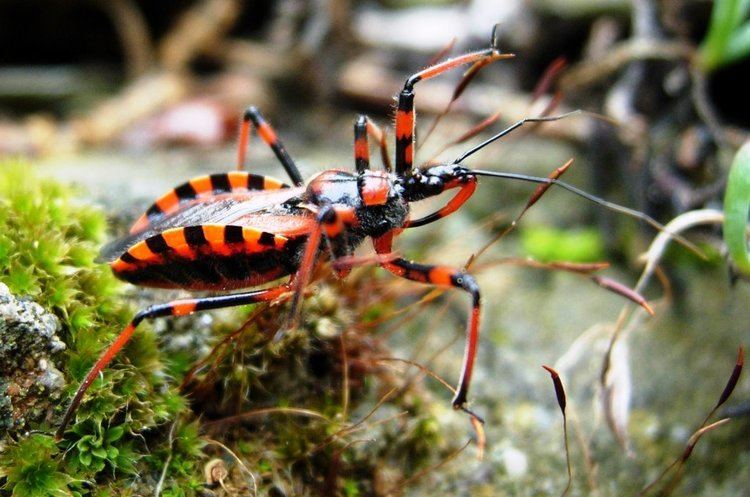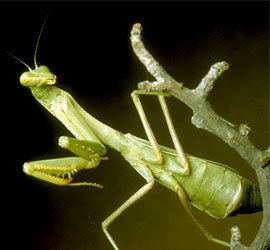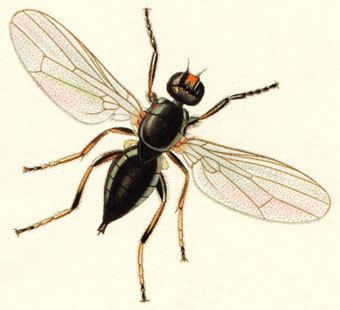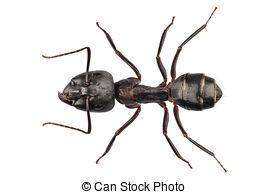Scientific name Hexapoda Higher classification Arthropod | Rank Subphylum | |
 | ||
Lower classifications Insect, Butterflies and moths, Butterfly, Springtail, Flea | ||
Grasshooper specimen phylum arthropoda subphylum hexapoda
The subphylum Hexapoda (from the Greek for six legs) constitutes the largest number of species of arthropods and includes the insects as well as three much smaller groups of wingless arthropods: Collembola, Protura, and Diplura (all of these were once considered insects). The Collembola (or springtails) are very abundant in terrestrial environments. Hexapods are named for their most distinctive feature: a consolidated thorax with three pairs of legs. Most other arthropods have more than three pairs of legs.
Contents
- Grasshooper specimen phylum arthropoda subphylum hexapoda
- Class hexapoda adec
- Morphology
- Evolution and relationships
- References

Class hexapoda adec
Morphology

Hexapods have bodies ranging in length from 0.5 mm to over 300 mm which are divided into an anterior head, thorax, and posterior abdomen. The head is composed of a presegmental acron that usually bears eyes (absent in Protura and Diplura), followed by six segments, all closely fused together, with the following appendages:


The mouth lies between the fourth and fifth segments and is covered by a projection from the sixth, called the labrum (upper lip). In true insects (class Insecta) the mouthparts are exposed or ectognathous, while in other groups they are enveloped or endognathous. Similar appendages are found on the heads of Myriapoda and Crustacea, although these have secondary antennae.

The thorax is composed of three segments, each of which bears a single pair of legs. As is typical of arthropods adapted to life on land, each leg has only a single walking branch composed of five segments, without the gill branches found in some other arthropods and with gill on the abdominal segments of some immature aquatic insects. In most insects the second and third thoracic segments also support wings. It has been suggested that these may be homologous to the gill branches of crustaceans, or they may have developed from extensions of the segments themselves.
The abdomen consists of eleven segments in all true insects (often reduced in number in many insect species), but in Protura it has twelve, and in Collembola only six (sometimes reduced to only four). The appendages on the abdomen are extremely reduced, restricted to the external genitalia and sometimes a pair of sensory cerci on the last segment.
Evolution and relationships
The myriapods have traditionally been considered the closest relatives of the hexapods, based on morphological similarity. These were then considered subclasses of a subphylum called Uniramia or Atelocerata. New work, however, has called this into question, and it appears the hexapoda's closest relatives may be the crustaceans. The non-insect hexapods have variously been considered a single evolutionary line, typically treated as Class Entognatha (cladogram A), or several lines with different relationships with the Class Insecta. In particular, the Diplura may be more closely related to the Insecta than to the Collembola (spring tails) or the Protura (cladogram B). There is also some evidence suggesting that the hexapod groups may not share a common origin, and in particular that the Collembola belong elsewhere.
Molecular analysis suggests that the hexapods diverged from their sister group, the Anostraca (fairy shrimps), at around the start of the Silurian period 440 million years ago - coinciding with the appearance of vascular plants on land.
The following cladograms, showing three possible relationships among hexapoda, are based on the Tree of Life Web Project; Diplura is shown with an unstable position:
An incomplete possible insect fossil, Strudiella devonica, has been recovered from the Devonian period. This fossil may help to fill the arthropod gap from 385 million to 325 million years ago.
